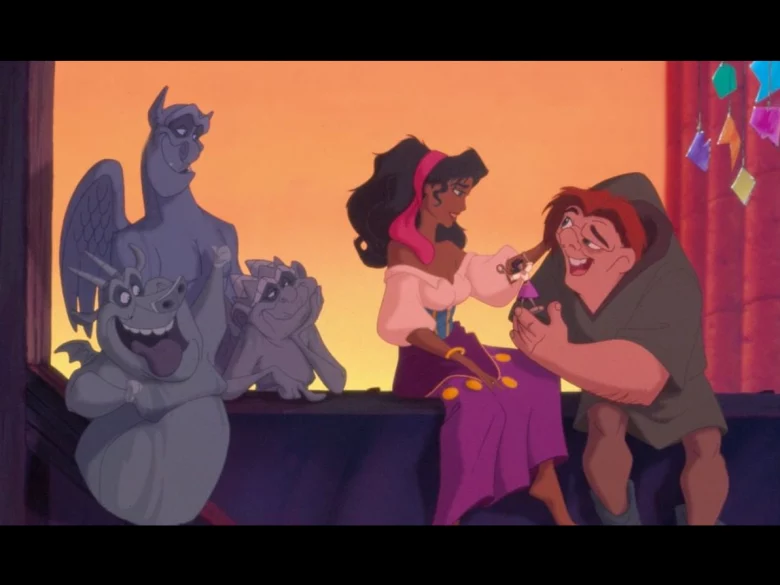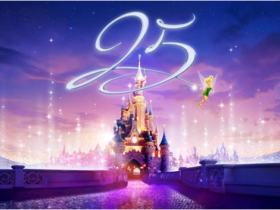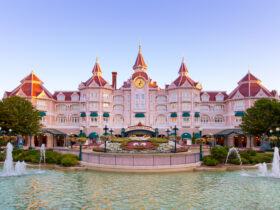This Disney classic is based on the novel Notre-Dame de Paris by Victor Hugo published in 1831. It is the 9th adaptation of this story on the big screen.
The plot takes place in the year of grace 1482 in the heart of Paris.
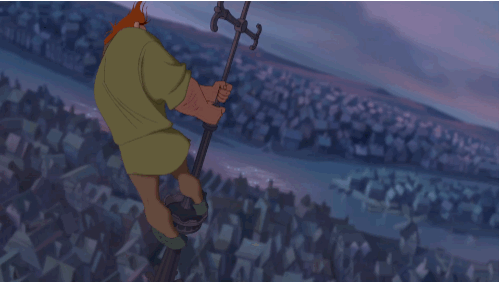
Summary of the work by Disney
Orphan and deformed, Quasimodo lives in the bell tower of Notre-Dame. His master, the cruel Frollo, has forbidden him to leave.
On the day of the Carnival of Fools, his friends La Muraille, La Rocaille and La Volière, the three gargoyles, persuade Quasimodo to join the party. He meets Esmeralda, Phoebus and the adventure begins…
What about the Victor Hugo version?
In 15th century Paris, a young and beautiful gypsy girl named Esmerelda dances on the square of Notre Dame. Her beauty overwhelms the archdeacon of Notre-Dame, Claude Frollo, who tries to kidnap her with the help of his bell-ringer, the malformed Quasimodo. Esmerelda is saved by a squad of archers, commanded by the captain of the guard Phoebus de Châteaupers…
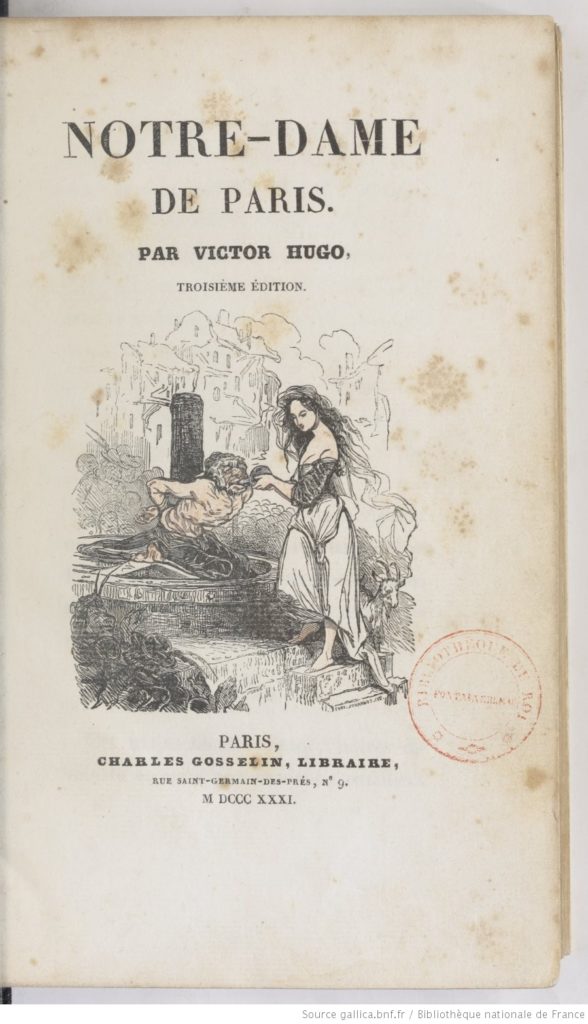
The most notable differences
It is quite obvious that we find differences in the work of Victor Hugo and that relayed by Disney.
At first, we also note that there is not the presence of all the characters of the story of Victor Hugo. But on the contrary there are new ones in the Disney, like the 3 gargoyles for example.
To continue on the characters, 3 are quite different from the original story.
The first difference is in the character of Judge Frollo. In the original version, Frollo is the archdeacon* of Notre Dame, but in Disney’s version, he is a judge.
*An archdeacon is an episcopal vicar to whom the bishop entrusts the mission of assisting him in a territorial portion of his diocese called archdeaconry. For this purpose, he receives a delegation of the bishop’s responsibilities in this territory.
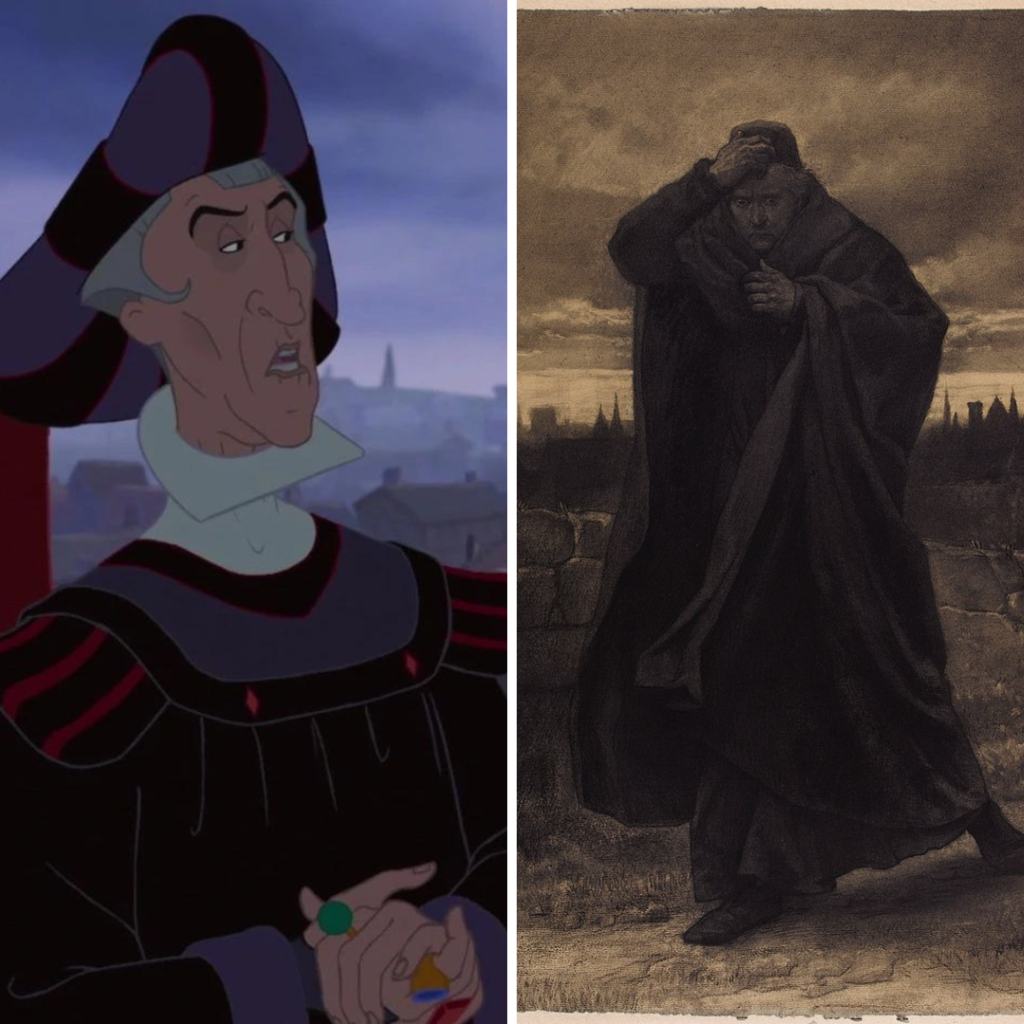
The second is Phoebus, indeed in the film, he is portrayed as the prince charming, courageous, charismatic who wins the heart of the beautiful Esmeralda. In the book it is not so, since our dear Phoebus turns out to be a vulgar man, with questionable inclinations and vises. Worse, he even plays a role in the hanging of Esmeralda…
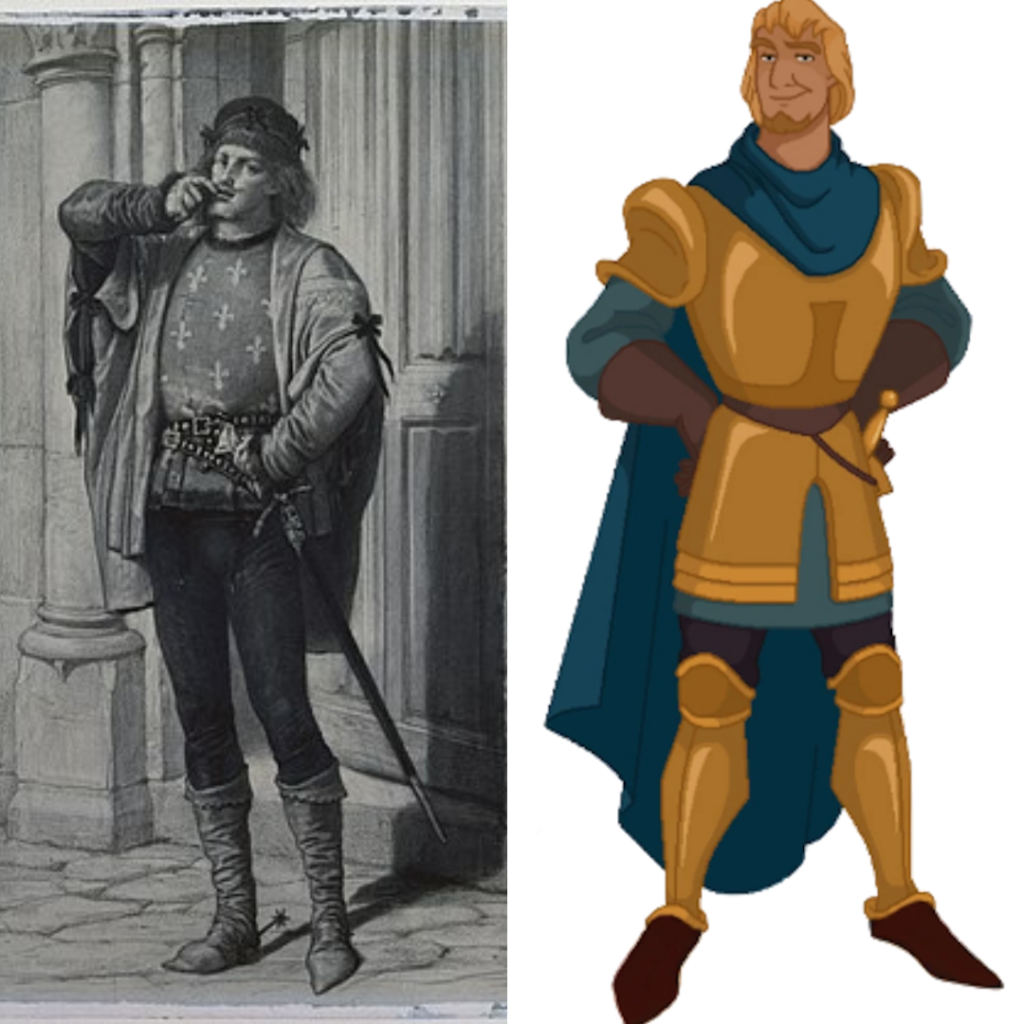
And finally Quasimodo, who happens to be deaf, mean and savage in the original work. Nothing to do with our Disney Quasimodo who is helpful, friendly, kind, shy and endearing.
To conclude on the differences, you will have understood that the end is much more tragic under the pen of Victor Hugo. Indeed Esmerelda ends up hanging, Quasimodo kills Frollo and then decides to commit suicide. And Phoebus marries a certain Fleur de Lys.
We are far from the heroic act of Quasimodo saving Esmeralda from the burning cathedral. But also from the love story between Esmeralda and Phoebus.
Technical details of the animated film
- 34th classic of animation
- 48th feature film
- Release: November 1996 in France
- Directed by: Gary Trousdale, Kirk Wise, Gaëtan and Paul Brizzi
- Music by Composer: Alan Menken
- Budget : over 6 million dollars
Songs of The Hunchback of Notre-Dame
- The Bells of Notre-Dame – Clopin, l’Archdeacon & Frollo
- Out There – Frollo & Quasimodo
- Topsy Turvy – Clopin and the villagers
- God Help the Outcasts – Esmeralda
- Heaven’s Light – Quasimodo
- Hellfire – Frollo
- A Guy Like You – La Rocaille, la Muraille & La Volière
- Court of Miracles – Clopin and the gypsies
- The Bells of Notre-Dame (recovery) – Clopin & chorus
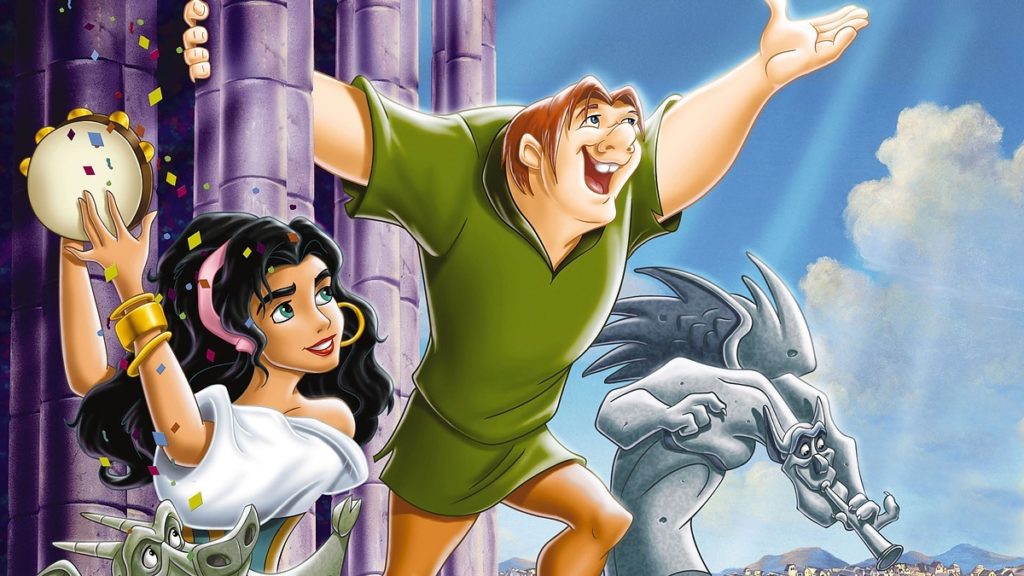
A half-hearted success
The Hunchback of Notre Dame is a well-known Disney classic. Despite the good reviews and numerous recommendations, it is not a favorite in the eyes of the public, which often too young did not understand all the complexity of some points of the story. It is not in the top 10 Disney movies and is often forgotten by families.
Nevertheless, it remains a must-see that puts Paris and thus France at the forefront of the stage.


